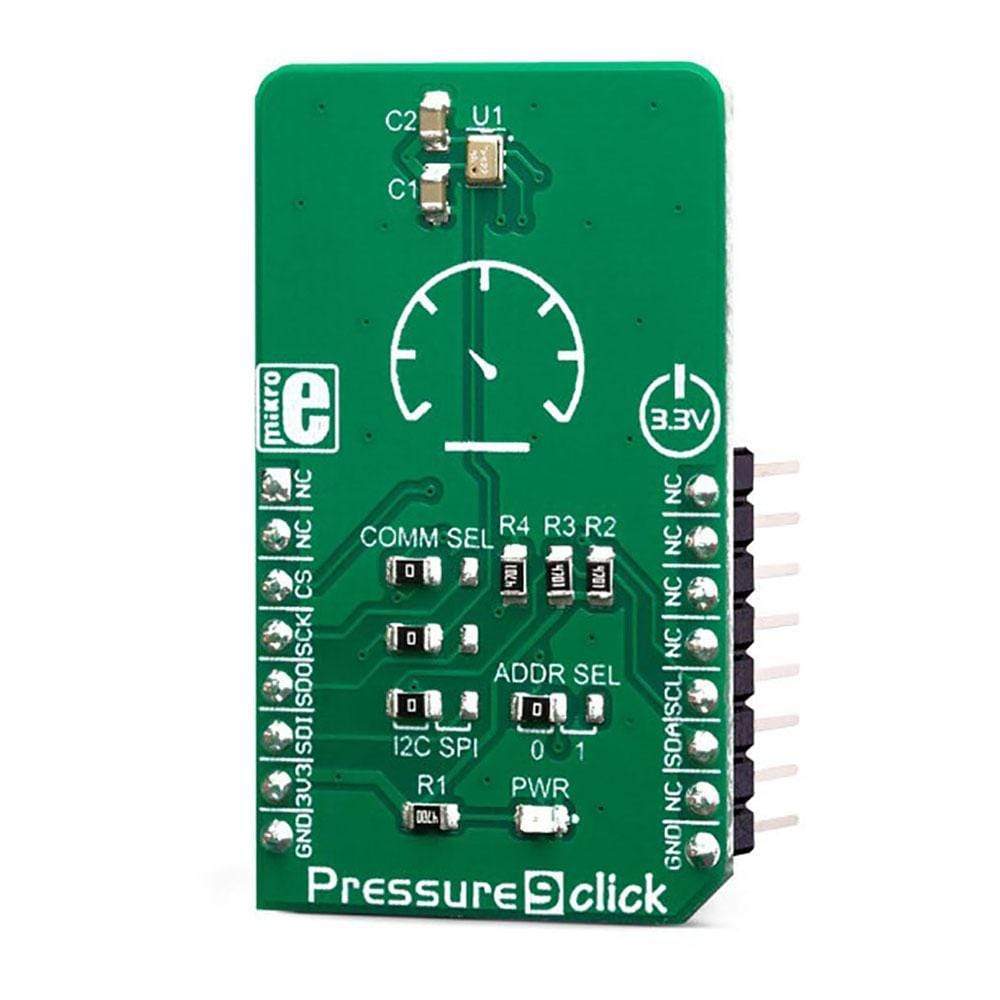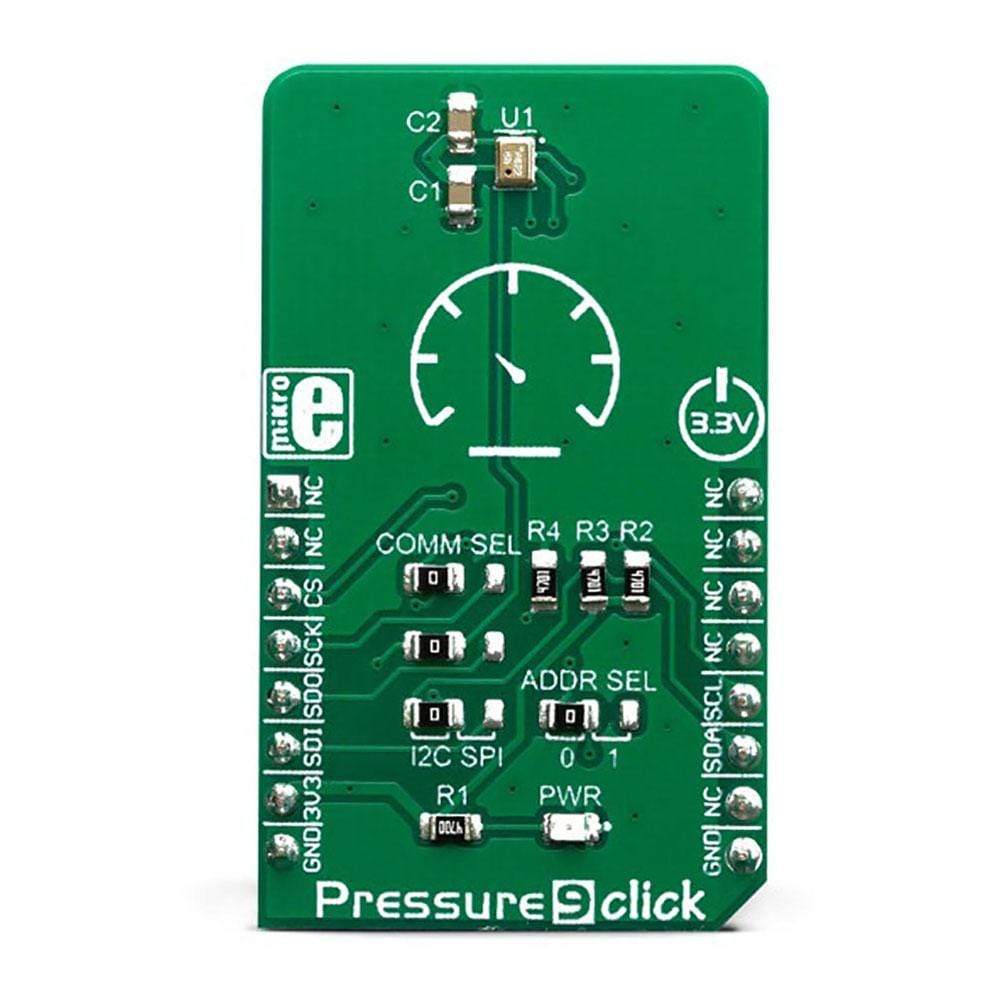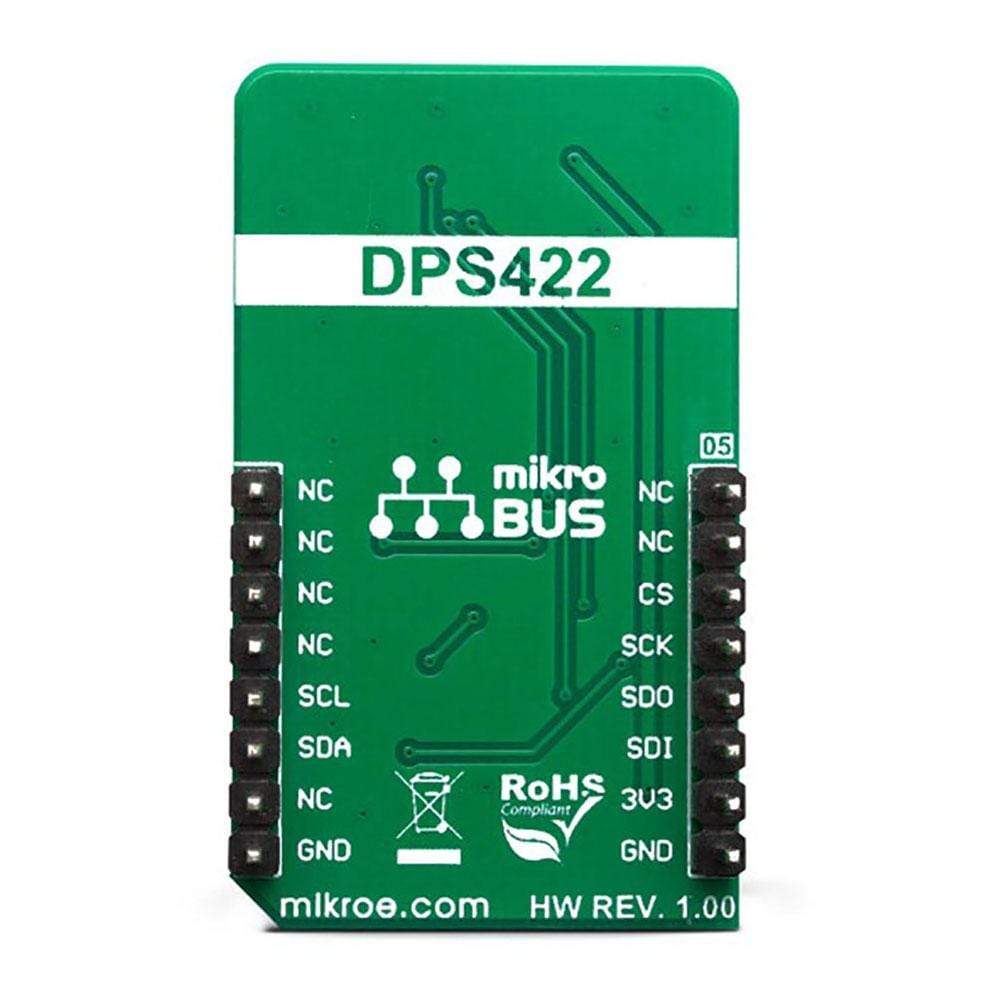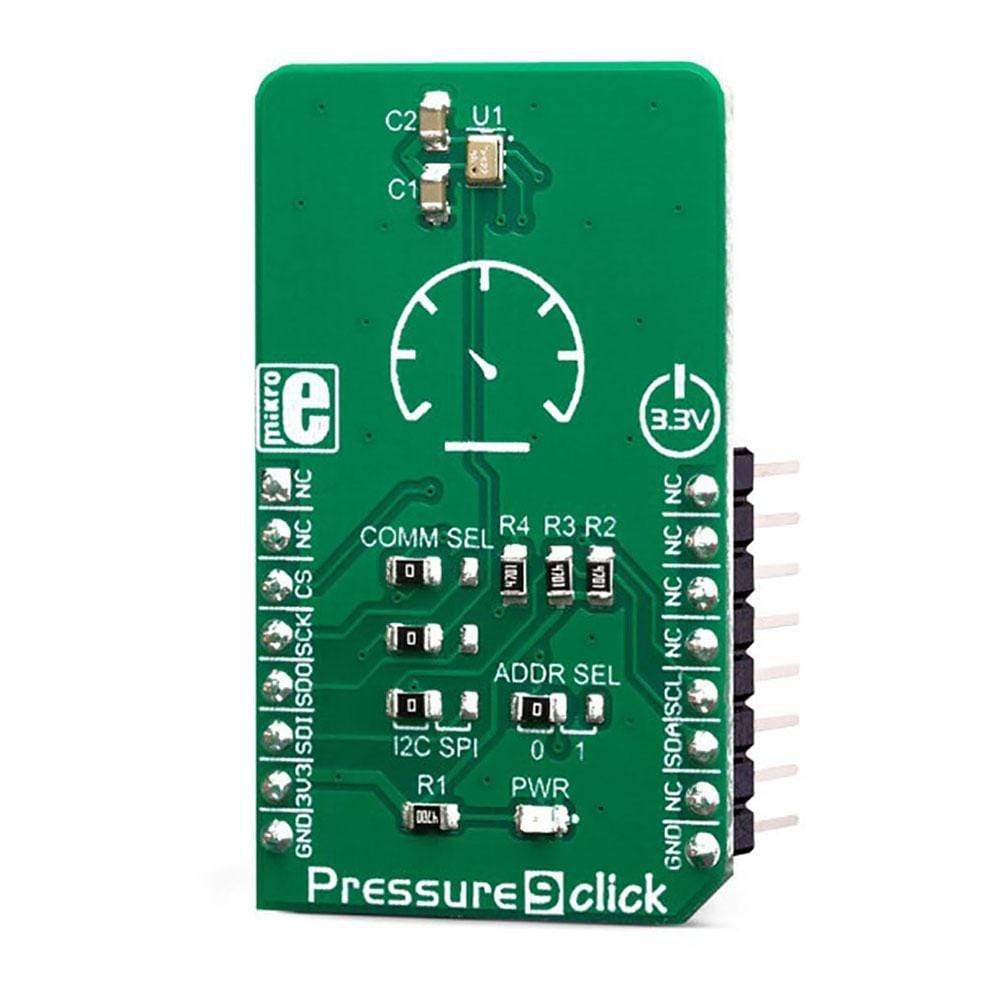
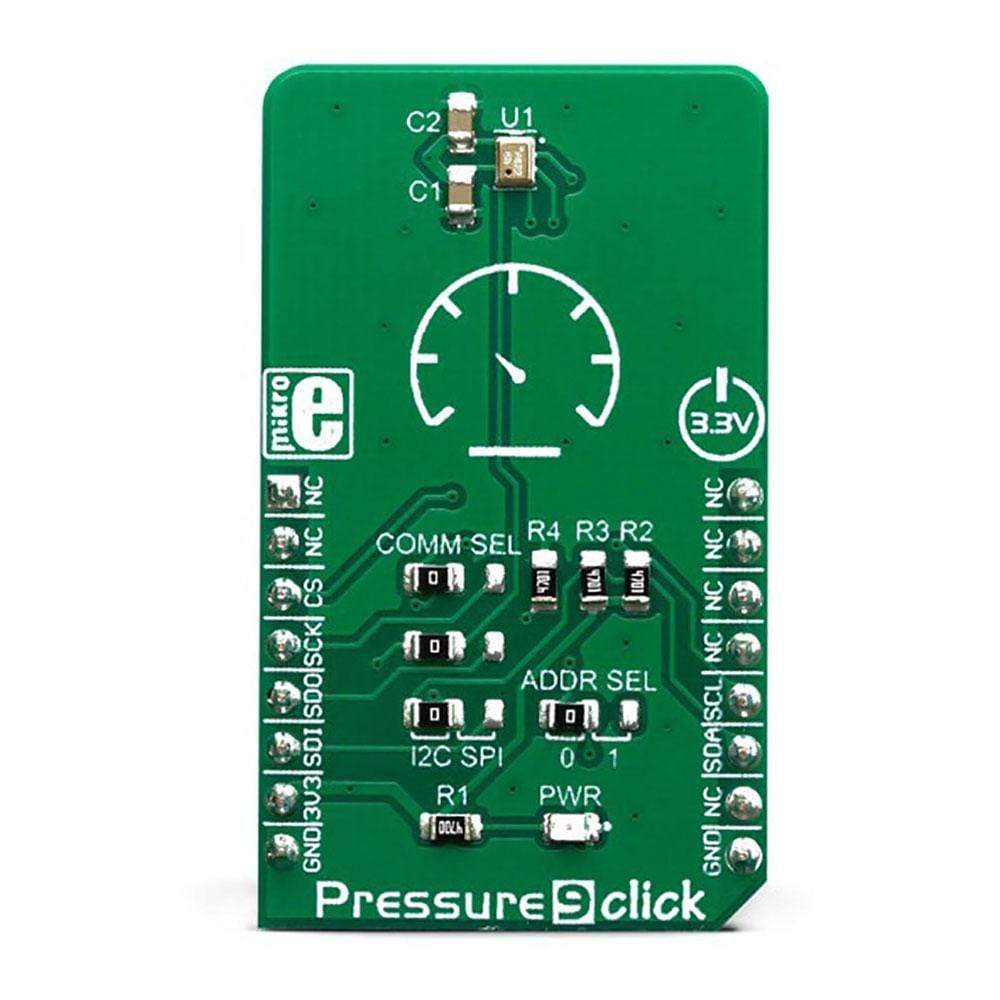
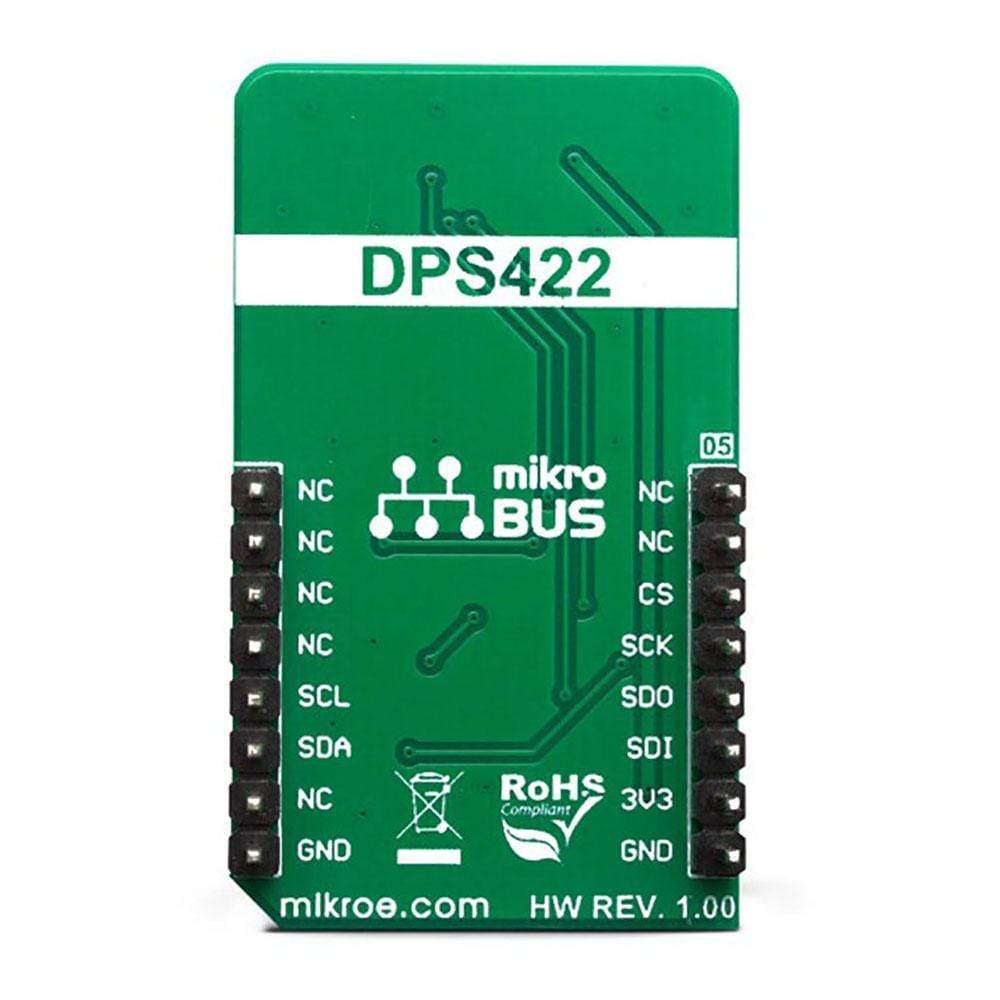
Overview
The Pressure 9 Click Board™ is a digital barometric air pressure sensor Click Board™. It is equipped with the DPS422, barometric air pressure sensor, based on a capacitive sensor element. Besides the pressure, this sensor can also measure temperature. Measurement data is available over the I2C or SPI interface, along with the factory-calibrated coefficients, used for high-accuracy data conversion. The device also features 32 words-long FIFO buffer, low power consumption, and very high precision, thanks to an integrated 24-bit A/D converter.
The Pressure 9 Click Board™ can be used within the pressure range from 300 to 1200hPa and temperature in the range from -40⁰C to +85⁰C.
Downloads
Le Pressure 9 Click Board™ est un capteur de pression atmosphérique barométrique numérique Click Board™. Il est équipé du DPS422, capteur de pression atmosphérique barométrique, basé sur un élément capteur capacitif. Outre la pression, ce capteur peut également mesurer la température. Les données de mesure sont disponibles via l'interface I2C ou SPI, ainsi que les coefficients calibrés en usine, utilisés pour une conversion de données de haute précision. L'appareil dispose également d'un tampon FIFO de 32 mots, d'une faible consommation d'énergie et d'une très haute précision, grâce à un convertisseur A/N 24 bits intégré.
Le Pressure 9 Click Board™ peut être utilisé dans une plage de pression de 300 à 1200 hPa et une plage de température de -40⁰C à +85⁰C.
| General Information | |
|---|---|
Part Number (SKU) |
MIKROE-3441
|
Manufacturer |
|
| Physical and Mechanical | |
Weight |
0.018 kg
|
| Other | |
Country of Origin |
|
HS Code Customs Tariff code
|
|
EAN |
8606018714889
|
Warranty |
|
Frequently Asked Questions
Have a Question?
Be the first to ask a question about this.

